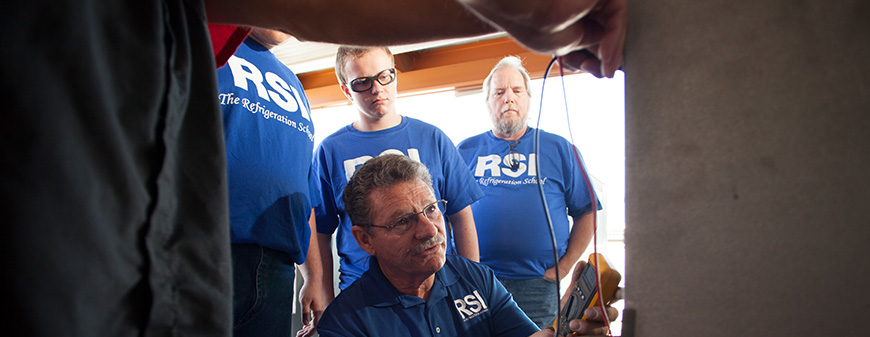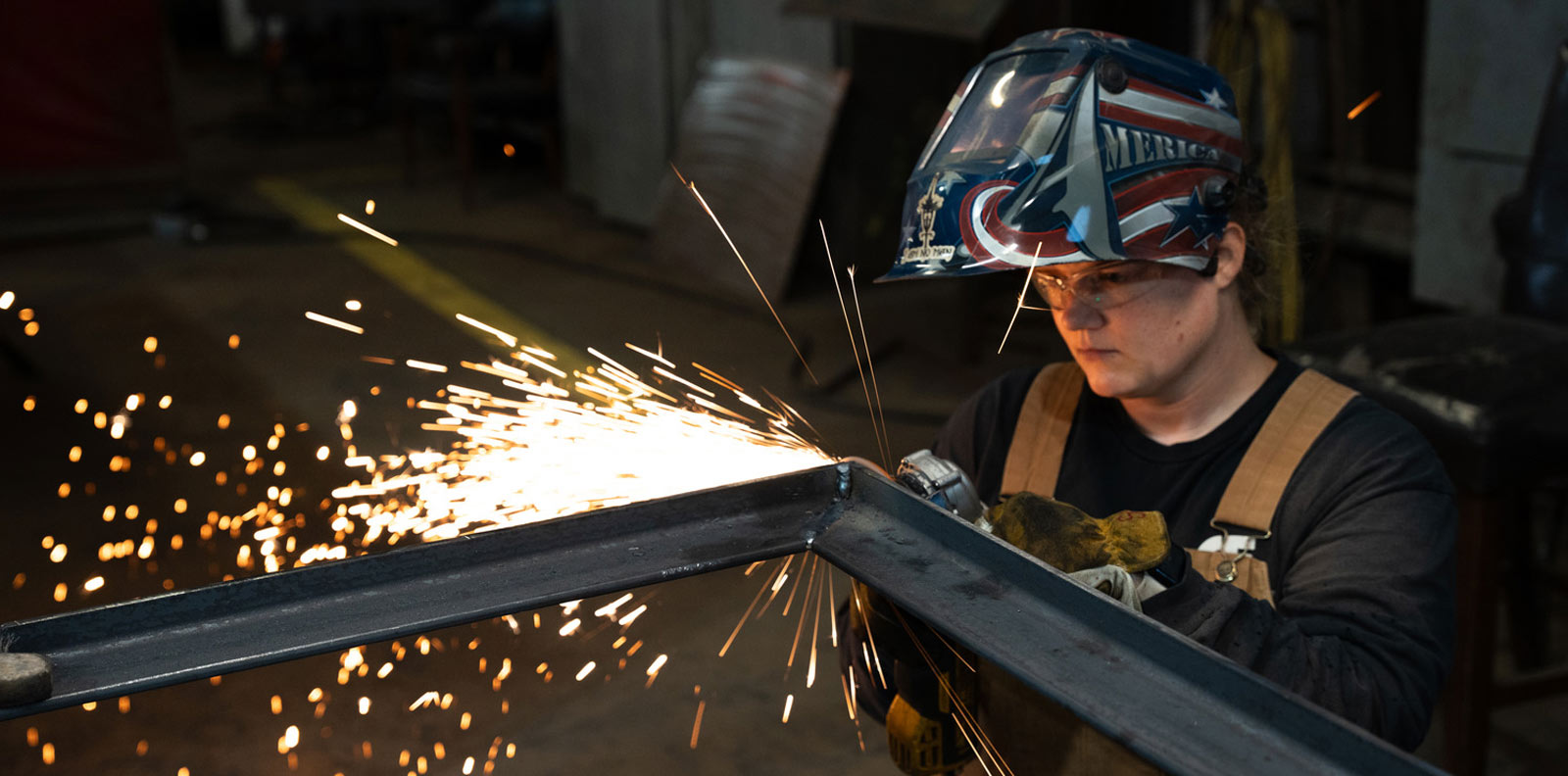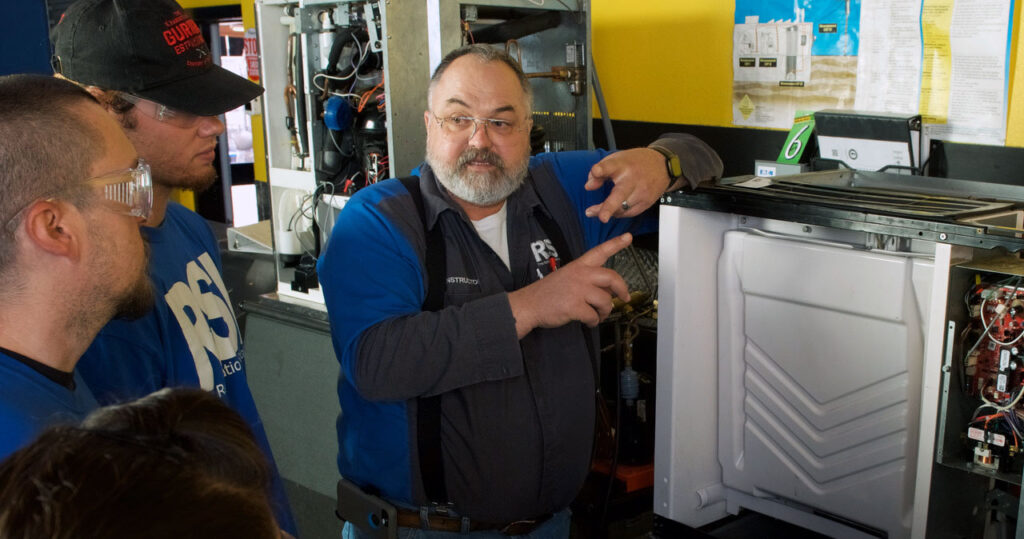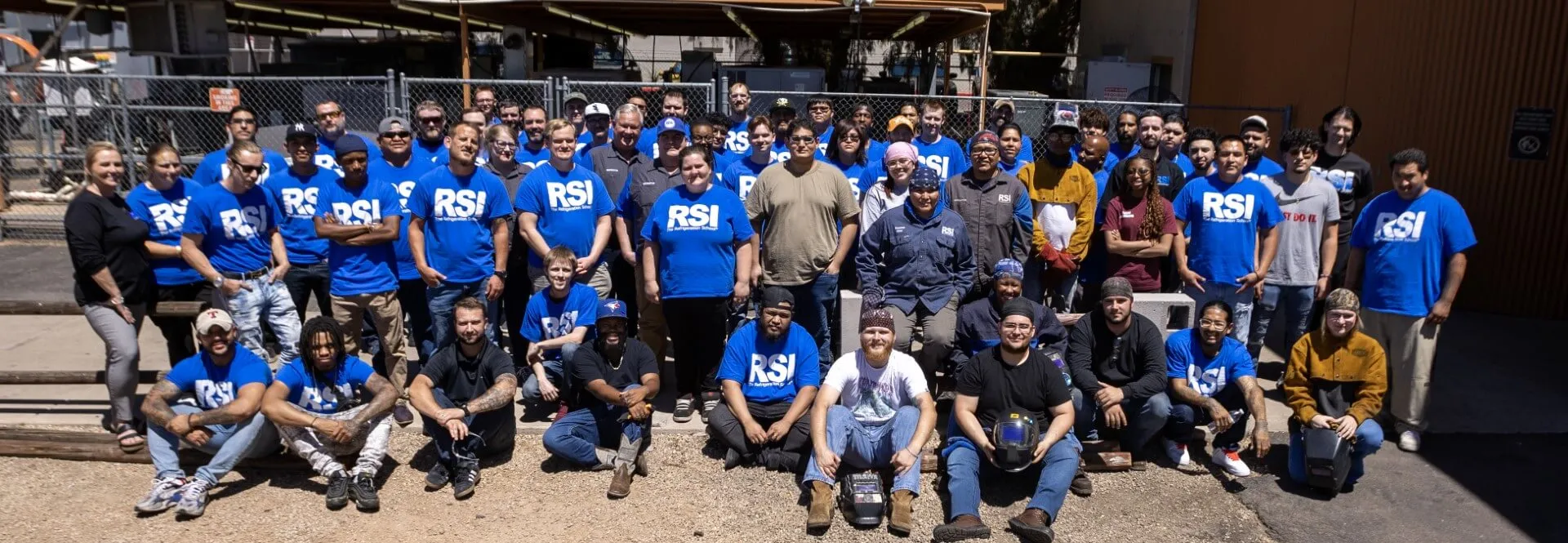RSI is a Great Training Option for Everyone
Learn more about how we can prepare you to advance your career.
What’s the biggest trend in the skilled trades right now? Companies can’t find enough qualified workers. The problem even has a name: the skilled trades shortage.[1]
It’s a shame so many younger workers are choosing other fields because there can be many benefits to a career as an HVAC technician, electrician or welder.[2] From healthy job growth and pay to the fulfillment of working with your hands and seeing projects through from start to finish, the skilled trades have a lot to offer.[3][4][5][6]
Sound pretty good? Wondering where to sign up? Well, getting “qualified” is a good place to start, and vocational training is one way to do it.[7]
Learn more about the skilled trades labor gap and the role vocational training can play in filling it, as well as helping to improve job opportunities in specific fields.
How Vocational Training Could Help Meet Demand for Skilled Trades Workers
“Somewhere along the line a decision was made that everybody needs to go to college, and it was something less worthy working with your hands and doing these skilled jobs,” explained Eric Thorkilsen, the chief executive of This Old House Ventures.
Get Started on the Path to a New Career
Fill out our form to learn how we can help you change your life.
One of the major reasons there aren’t enough qualified skilled tradespeople is that younger generations have largely chosen college over trade school, despite the high student loan debt and diminishing returns on a bachelor’s degree for many graduates.
However, a consensus is forming among industry insiders, business owners, researchers and even the President that vocational training may provide a solution to the skilled labor shortage.
- Lowe’s is partnering with 60 other businesses and organizations to promote an initiative called “Gen T,” which will include a national online marketplace for jobs and education programs.
- President Trump recently signed the Strengthening Career and Technical Education for the 21st Century Act to reform technical and career education.
- The National Skills Coalition cites education and training as a path for unemployed workers and those in low-wage jobs to transition into middle-skill jobs they can support their families with and help meet national demand for qualified labor in this sector. Middle-skill jobs are those that require a credential beyond a high school diploma but not a college degree.
What Are the Benefits of Vocational Training?
Not only can vocational training lead to careers as an HVAC technician, solar panel installer or welder but also it has many advantages when compared to college.[8][9][10]
Short Training Time
Vocational programs can be as short as four months and as long as two years. Compare this to the four years or more necessary to earn a bachelor’s degree.[11][12]
Lower Cost
Vocational school can be less expensive than a university: $3,000 to $15,000 per year versus $26,120 a year for four-year institutions in the 2015-2016 school year.
Hands-On Learning
If you don’t learn well by sitting in a classroom hearing a teacher lecture about theories and concepts all day, then the hands-on training offered at a vocational school could be a better fit.[13]
Career Potential
One nice thing about vocational school is that it can lead to careers with healthy potential. For example, the Bureau of Labor Statistics predicts jobs for HVAC technicians to be added at a rate of 15 percent through 2026, nearly twice the national average for all occupations.[14]
Some college grads struggle to enter the job market and end up working at jobs that don’t require a degree, such as being a barista at a coffee shop.
Neither vocational school nor college guarantees jobs. But college can be a bigger investment, and some types of degrees can be applied in the working world better than others.[15]
How Can Training Improve Career Opportunities in the Skilled Trades?

When researching a career, you’d help yourself by referencing the Bureau of Labor Statistics (BLS). This agency provides online career profiles for most of the occupations in the U.S., with information about requirements to work in the field, job growth in the coming years, pay and more.
Let’s see what the training requirements are for some skilled trades that the BLS expects to have healthy job growth in the coming years:
HVAC Technician
Job Growth
15 percent through 2026 (much faster than average).[16]
Training Requirement
Vocational training can be beneficial because employers are typically looking for applicants with a postsecondary education or apprenticeship.[17]
Solar Photovoltaic Installer
Job Growth
105 percent through 2026 (much faster than average).[18]
Training Requirement
Vocational school is a common route to a career as a solar photovoltaic installer.[19]
Electrician
Job Growth
9 percent through 2026 (as fast as average).[20]
Training Requirement
Technical school can be a starting point to becoming a licensed electrician.[21]
Welder
Job Growth
6 percent through 2026 (as fast as average).[22]
Training Requirement
Vocational and on-the-job training are generally required to become a welder.
Where to Learn the Skills for a Career in the Trades
Companies are looking for qualified tradespeople. If you’re interested in a career in the trades, learning the skills they’re looking for can help improve job opportunities. Where can you learn such skills? Vocational schools offer an array of programs, from HVAC training to welding instruction. They can usually be completed in less than two years, making for relatively quick preparation for skilled trades positions.
Additional Sources
[1] https://www.adeccousa.com/employers/resources/skilled-trades-in-demand/
[2] https://www.adeccousa.com/employers/resources/skilled-trades-in-demand/
[3] https://www.bls.gov/ooh/installation-maintenance-and-repair/heating-air-conditioning-and-refrigeration-mechanics-and-installers.htm
[4] https://www.bls.gov/ooh/construction-and-extraction/electricians.htm
[5] https://www.bls.gov/ooh/production/welders-cutters-solderers-and-brazers.htm
[6] https://www.trade-schools.net/articles/how-to-learn-a-trade.asp
[7] https://www.trade-schools.net/articles/how-to-learn-a-trade.asp
[8] https://www.bls.gov/ooh/installation-maintenance-and-repair/heating-air-conditioning-and-refrigeration-mechanics-and-installers.htm
[9] https://www.bls.gov/ooh/construction-and-extraction/solar-photovoltaic-installers.htm
[10] https://www.bls.gov/ooh/production/welders-cutters-solderers-and-brazers.htm
[11] https://www.vocationalschools.ca/faq/program-lengths
[12] https://www.geteducated.com/career-center/detail/what-is-a-bachelors-degree
[13] https://www.learnhowtobecome.org/vocational-trade-schools/
[14] https://www.bls.gov/ooh/installation-maintenance-and-repair/heating-air-conditioning-and-refrigeration-mechanics-and-installers.htm
[15] https://www.washingtonpost.com/news/grade-point/wp/2016/04/28/whats-a-degree-worth-depends-on-what-you-study-and-where/?utm_term=.d8714832fc78
[16] https://www.bls.gov/ooh/installation-maintenance-and-repair/heating-air-conditioning-and-refrigeration-mechanics-and-installers.htm
[17] https://www.bls.gov/ooh/installation-maintenance-and-repair/heating-air-conditioning-and-refrigeration-mechanics-and-installers.htm#tab-4
[18] https://www.bls.gov/ooh/construction-and-extraction/solar-photovoltaic-installers.htm
[19] https://www.bls.gov/ooh/construction-and-extraction/solar-photovoltaic-installers.htm#tab-4
[20] https://www.bls.gov/ooh/construction-and-extraction/electricians.htm
[21] https://www.bls.gov/ooh/construction-and-extraction/electricians.htm#tab-4
[22] https://www.bls.gov/ooh/production/welders-cutters-solderers-and-brazers.htm
This blog has been labeled as archived as it may no longer contain the most up-to-date data. For a list of all current blog posts, please visit our blog homepage at https://www.rsi.edu/blog/




